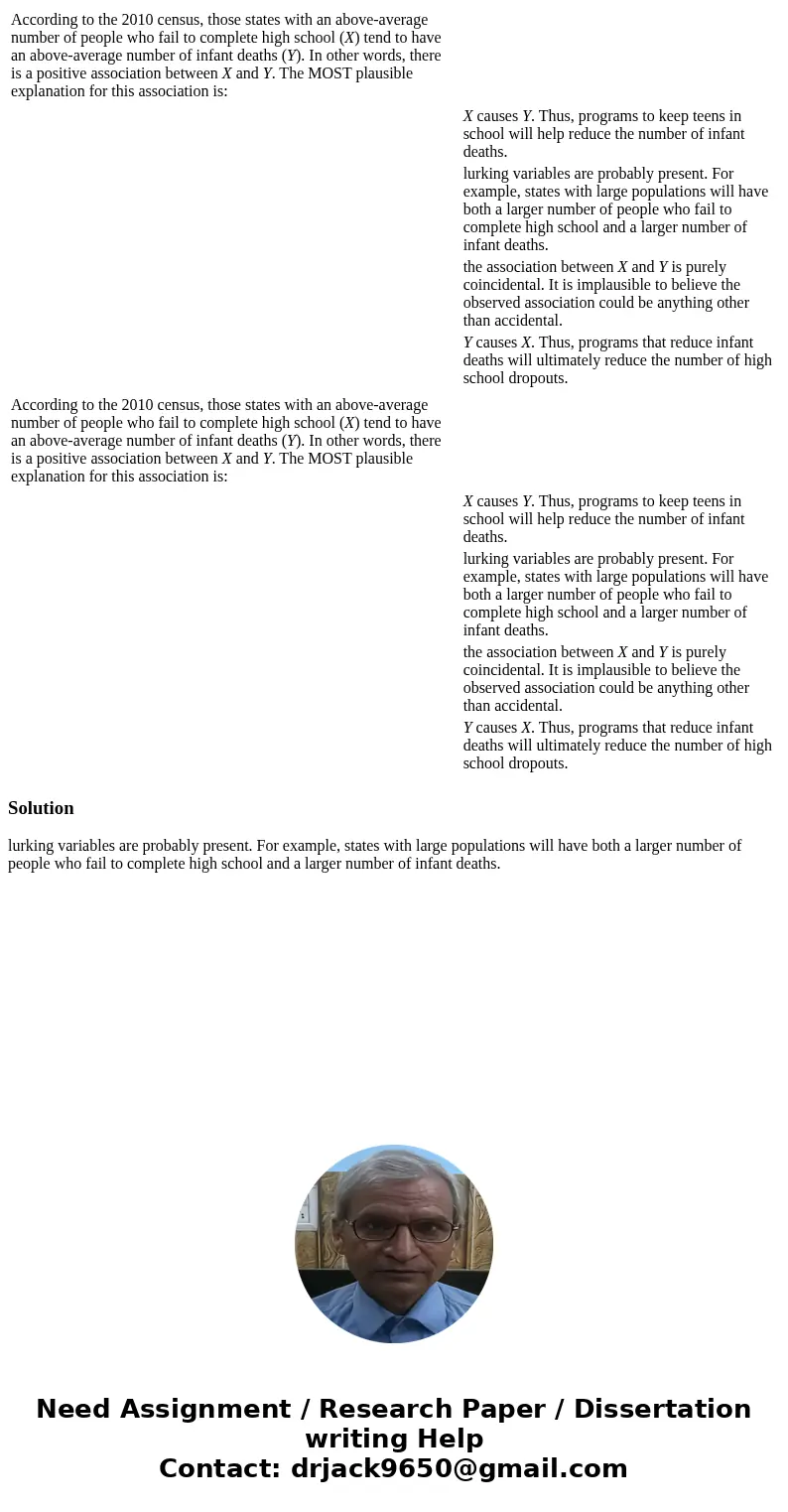| According to the 2010 census, those states with an above-average number of people who fail to complete high school (X) tend to have an above-average number of infant deaths (Y). In other words, there is a positive association between X and Y. The MOST plausible explanation for this association is: |
| | X causes Y. Thus, programs to keep teens in school will help reduce the number of infant deaths. | | lurking variables are probably present. For example, states with large populations will have both a larger number of people who fail to complete high school and a larger number of infant deaths. | | the association between X and Y is purely coincidental. It is implausible to believe the observed association could be anything other than accidental. | | Y causes X. Thus, programs that reduce infant deaths will ultimately reduce the number of high school dropouts. | |
| According to the 2010 census, those states with an above-average number of people who fail to complete high school (X) tend to have an above-average number of infant deaths (Y). In other words, there is a positive association between X and Y. The MOST plausible explanation for this association is: |
| | X causes Y. Thus, programs to keep teens in school will help reduce the number of infant deaths. | | lurking variables are probably present. For example, states with large populations will have both a larger number of people who fail to complete high school and a larger number of infant deaths. | | the association between X and Y is purely coincidental. It is implausible to believe the observed association could be anything other than accidental. | | Y causes X. Thus, programs that reduce infant deaths will ultimately reduce the number of high school dropouts. | |
lurking variables are probably present. For example, states with large populations will have both a larger number of people who fail to complete high school and a larger number of infant deaths.

 Homework Sourse
Homework Sourse